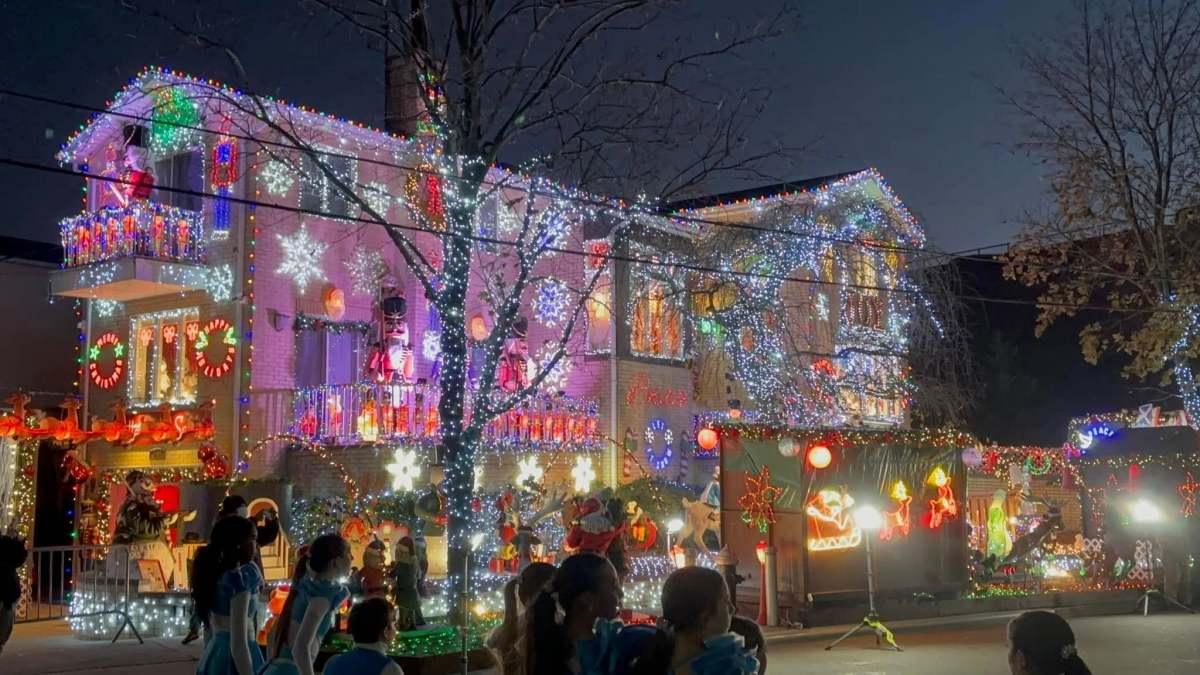
Manuel A. del Río’s farm was never going to be easy to find. There’s little GPS service in the hills of Morovis, a mountainous municipality in central Puerto Rico. I drove past the entrance the first time because the kilometer sign marking the spot had not been replaced since it blew away during Hurricane Maria.
Del Río said not to worry, he’d had a hard time finding his ancestral home when he first arrived a few days after the hurricane. The turnoff and steep dirt path was covered in fallen trees and greenery. But his longtime neighbor, Pejel, was already there, struggling with a machete to hack through the debris. Pejel was crying.
Del Río, 66, who lives mostly in San Juan, insisted we meet in person before I tried coming out to the Morovis farm, because he wanted to give me a hand-written map. The map was methodically designed, unsurprisingly for a man who drives around Puerto Rico selling medical appliances for a living. We had dinner at a Sizzler franchise in San Juan, surrounded by families celebrating birthdays. Slightly hard of hearing, del Río sometimes struggled with questions. He arrived at the restaurant earlier than our agreed upon time and I found him standing alone, a little out of place in the chaos of the nighttime mall, the realm of teenagers like malls at such times everywhere.
But in Morovis, despite the storm’s remnants, del Río seemed grounded. It felt as though everyone he passed was a cousin or friend. Maybe the comfort came from his family’s long roots in the area: his grandfather had been one of the region’s largest landowners and a former mayor. Among the mountains, del Río seemed buoyed by love for the densely green land. And he, like other Morovis residents, was driven to bring things back to the way they were.
Maybe you heard about Morovis right after Hurricane Maria: The storm swept away a crucial bridge there leaving several thousand residents stranded — the only way into town required a more-than-two-hour trip around the mountain. The situation perfectly illustrated the logistical nightmare the hurricane wrought. But though the world’s attention has largely moved elsewhere more than four months after the storm, for Morovis, as for much of Puerto Rico, not much has changed.
‘People are desperate for power’
I had been introduced to del Río by a colleague of a friend of my mother’s. It’s not hard to find New Yorkers with connections to Puerto Rico. Plenty of city residents introduced me to relatives on the island to bring back stories of Puerto Rico’s continued plight. But when I reached out to del Río, he was the most welcoming and the most insistent. I had to see Morovis, he explained. And it was true: Morovis embodies some of the key hopes and challenges for Puerto Rico now and in the coming years.
For example, the town was economically troubled long before the storm, with nearly 15 percent unemployment in August, according to the mayor’s office. The entire island’s finances have been precarious for nearly a decade and the hurricane only made things worse. The commonwealth is more than $70 billion in debt and has faced stark austerity from a control board.
Electricity, provided by the teetering power authority, PREPA, has always been expensive in Puerto Rico. Now imagine no electricity at all.
Morovis Mayor Carmen Maldonado channeled that sentiment when I got in to see her. “People are desperate for power,” she said in Spanish.
We spoke over the weekend that the federal government had shut down in Washington; on the mainland, there was lots of speechifying, but Maldonado was on the job. She’d recently gone with 30 mayors to the governor of Puerto Rico to complain about the slow speed of recovery. Late that afternoon, she’d be giving out solar lamps. In Morovis, only some 20 percent of the urban zone was receiving power in January.
Across Puerto Rico, I asked people what part of electricity they missed most — what they hadn’t had for nearly half a year. For some, it was being able to do homework at a desk, not by the light of a running car. Or having home-cooked meals, or going to the bathroom at night without a flashlight. If you did have a generator, you were running it for hours in the daytime, the drone of the machines an anthem to these months of chaos across the island.
Power is coming back slowly. New York, with its historic ties to the island, had more than 450 workers on the job in January. In San Juan, I watched New York-based crews turning the lights on for eager households. I also visited PREPA offices where harried engineers expressed gratitude for the visiting New Yorkers. Now, approximately thirty percent of the island remains powerless.
Maldonado said that for Morovis, the wait for full power would be at least until May.
Del Río came to my interview with the Morovis mayor (“How should I call you,” he asked her. “Whatever you want,” she said graciously.), both to help translate and also to say various times what a great job he thought she was doing. Still, when we walked into the empty town square, he said: “Morovis was left behind.”
How so, I asked? To answer, he took me to the bridge.
‘Is it one way?’
A quick-flowing river separated our vehicle from the neighborhood of San Lorenzo. There were a few construction vehicles picking up wire-mesh cylinders and poles, placing them in the water. Four months later, there was no bridge.
This was where the hurricane swept the previously sturdy span away.
Without it, people have been driving, when they can, over a rocky strip in the river next to the construction site. That’s what del Río wanted to do. “Is it one way,” I asked? “Yeah sure,” del Río laughed.
I should be clear that this was little more than fording the river. If you went a few inches off-track, you’d be sunk. Our truck bounced around and I’m not sure what would have happened with a nighttime attempt. But this was as good as it got four months after the hurricane.
On the other side of the river, we passed dozens of houses wrapped in blue tarps. Thousands in this neighborhood had lost roofs in the storm. Landslides relandscaped people’s backyards and the surrounding hills. Del Río pointed at them, now green like much of Puerto Rico.
The hills had been white, he said, because all the leaves had blown off. It was maybe the most recovery that had been achieved in Morovis, and it was entirely natural.
This is the great challenge for Puerto Rico at the moment, and at times it seems almost impossible: The island is being asked to pull itself up by the bootstraps while balanced on the unstable shores of previous economic hardship; all while still searching for federal help.
An $81 billion federal disaster aid bill, for example, stalled for months in the U.S. Senate and has only now seen the light with Wednesday’s budget agreement. The more distant future doesn’t look bright, either. The Republican tax bill hammers the island with penalties on Puerto Rican-located businesses.
You’ll find plenty of Puerto Ricans who assign blame more locally, too — for political corruption, bad management, and a lack of planning to upgrade key infrastructure. Still, for the world’s wealthiest nation, it sure seems like a hell of a long time to allow a part of that nation to wallow.
Small wonder people are leaving — some 300,000 to Florida alone.
Maria del Río, Manuel’s niece, left the island years ago. Born and raised in Puerto Rico, career ambitions as a psychologist led her to establish herself on the mainland. She has been in New York City since 2003 and is a professor of school counseling at Brooklyn College.
But she says she sometimes thinks of returning. “For most people in the diaspora, there’s always an idea that you’re going to go back,” she said in a phone interview.
Though she didn’t grow up in Morovis, it was the site of family get togethers and traditions: the “heart of the island” both physically and for her forebears. So it was difficult to watch the pictures of a swamped Morovis appearing on social media in the days after the storm. And there was the added irony that she and others in New York might be seeing more of the destruction than their old friends in Morovis. Few were checking Facebook there.
But the pictures and stories of Morovis’ woes were spreading around the country anyway, first via those social media posts and then through news accounts. The world was seeing Morovis brought low. Surely, it wouldn’t be long until all that sharing made things right again.
‘A way of saying thank you’
While the wait continues, family members aren’t the only connections Morovis has to the outside world.
Manuel and I stopped for lunch at a roadside spot called Don Juan’s, whose owner had served in the U.S. armed forces in Vietnam and met his wife there. She now cooks in the restaurant’s kitchen.
Del Río himself became a national guardsman in the Vietnam era, though he didn’t see active duty. His eldest son did — as an infantryman in Afghanistan, one among Puerto Rico’s long history of service in the U.S. armed forces.
Today, the U.S. Army Corps of Engineers has contractors in the area working to restore power, just as the New York utilities are working to do the same in and around San Juan. In what I observed and heard of their interactions, Puerto Ricans tend to be gracious to the power workers, even if they are frustrated with the pace of work. They bang pots and pans in celebration at the workers’ arrival and offer food and drinks. They also take to social media, the governor’s office, and Washington, D.C. to ask for more help. It’s a strange yin-yang situation, not unlike the island’s halfway status: almost America, but statehood arguments and miles of water between.
We drove from the unfinished bridge back to del Río’s farm, where he showed me in meticulous detail the hurricane’s fury — the collapsed giant shed, the wooden posts that had been blown out of their holes, the trunks of the chopped up trees he and Pejel had been working to gather and then, ultimately, roll down into the valley and out of sight.
But as we drove, we passed a quiet-looking property with an empty front yard but for a giant American flag flapping in the wind. I said I hadn’t seen many, as opposed to the proliferation of Puerto Rican flags, and the ubiquitous “Se Levanta” island pride campaign brandishing the island’s capacity to rise.
Del Río didn’t say anything for a moment, and then he added quietly as the flag passed into our rearview: “That’s a way of saying thank you.”

































